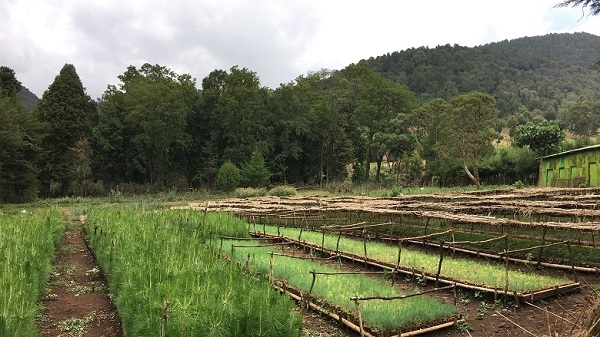
The government of Ethiopia, with support from the World Bank, officially launched the Oromia Forested Landscape Program to build on the successes of the Chilimo forest and expand activities across Oromia Region.
ADDIS ABABA (The World Bank)–The Chilimo forest is one of the few remnants of a dry, mountainous forest that once covered Ethiopia’s Central Plateau. At one time under threat from deforestation, the Chilimo forest is now under the sustainable management of local community cooperatives. Local forest communities are empowered to protect, manage, and decide on how to use the benefits accrued from the forest.
On May 5, 2017, the government of Ethiopia, with support from the World Bank, officially launched the Oromia Forested Landscape Program to build on the successes of the Chilimo forest and expand activities across Oromia Regional State. The launch was celebrated with a tree-planting ceremony and a visit by government, World Bank, and development partner representatives keen to learn from the experiences and challenges encountered by the community. The event also included a meeting with forest cooperative leaders and a celebration to kick-off of the new state-wide program.
The pride and enthusiasm of the community in managing the forest have been rewarded even in the face of continuous pressures on the forest. The launch highlighted a key feature of the “Oromia Forested Landscape Program” – it centers on the effort to replicate the successful community-centered approach as widely as possible by leveraging partners and other projects across the regional state.
The program is financed initially through an $18 million grant to the Federal Democratic Republic of Ethiopia by the World Bank’s BioCarbon Fund Initiative for Sustainable Forest Landscapes (ISFL) to improve the enabling environment for sustainable forest management and investment in Oromia. The program aims to eventually provide results-based payments for emission reductions achieved across Oromia Regional State. The World Bank’s ISFL has committed to buying up to 10 million tons of verified carbon dioxide equivalent emission reductions state-wide between 2018 and 2028. The grant helps realize this result by strengthening government systems related to safeguards, forest monitoring, and cross-sector coordination.
Read the complete story at The World Bank
——
See also:
- Ndiho Media: Growing Bamboo in Ethiopia
- Ethiopia: Up in the Mountains with an Impressive Array of Wildlife
- African Experts Urge Investment in Forest Conservation to Boost Green Growth
